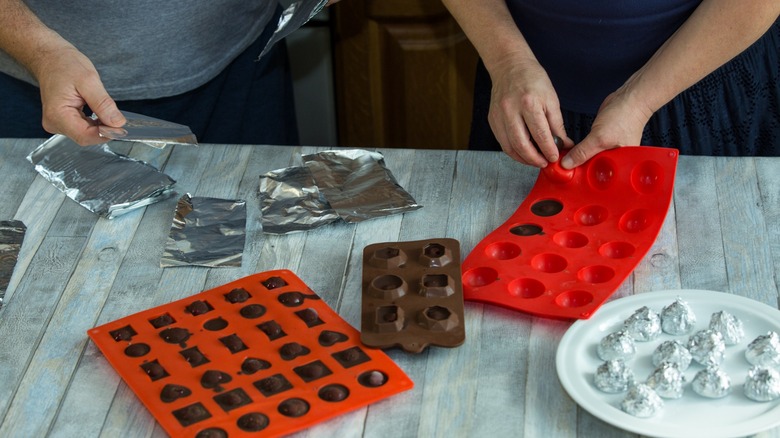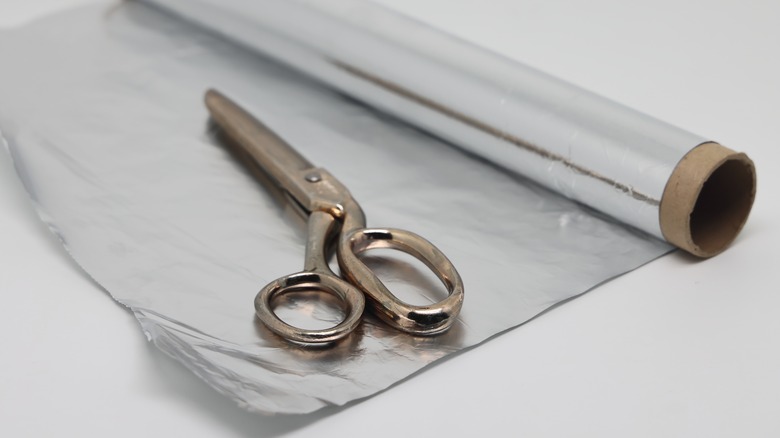Aluminum Foil Is The Stress-Free Substitute For Silicone Molds
When it comes to kitchen creativity, silicone molds have become indispensable tools for culinary enthusiasts. These flexible, non-stick wonders are perfect for crafting everything from intricate chocolate bonbons to perfectly shaped pancakes, buns, and even mini cakes. Yet, there are times when you might not have the right silicone mold on hand, or perhaps you're looking for a more cost-effective and readily available alternative. Enter a humble roll of aluminum foil.
Aluminum foil, a kitchen staple, is known for its flexibility, heat resistance, and non-stick properties, making it an excellent alternative to silicone molds. While high-quality silicone molds can be an investment and are not always immediately available, aluminum foil is a common household item found in most kitchens. You can use just the amount you need, making it a budget-friendly option for all sorts of projects.
Moreover, aluminum foil's malleability allows for customization in shape and size, offering endless possibilities for culinary creativity. This adaptability is particularly useful when you're experimenting with unique or unconventional designs and sizes that standard molds don't cater to. Lastly, the convenience factor cannot be overstated. Post-baking cleanup is often a dreaded task, and silicone molds can be tricky to get completely clean, but with aluminum foil, it's a hassle-free affair since foil can be discarded after use.
Creating a mold with aluminum foil
Aluminum foil can be ingeniously used to create two types of molds: a container-like mold for liquid ingredients and a rim-only mold for thicker mixtures. For a container-like mold, ideal for making candies with melted chocolate, start by cutting several square sheets of aluminum foil of equal size. Stack them for sturdiness and fold the edges upward to form a square container. If needed, use a solid object to shape the foil into the style you're after. Spray the inside with non-stick spray, place on a flat surface like a baking sheet, and pour in your liquid ingredient.
For thicker consistencies, like bun dough or pancake batter, a rim-only mold is more suitable. Cut a strip of foil and fold it in half, then again for extra thickness. Create a ring by joining the ends, either by overlapping and stapling them or by creating a pocket at one end to slide in the other end. Shape the foil into your desired form, such as a circle or heart. Place this rim on your cooking surface, e.g., a baking sheet or pan, spray with oil to prevent sticking, and add your mixture. Once your culinary creation is ready, the foil mold can be easily pulled away or torn off.

